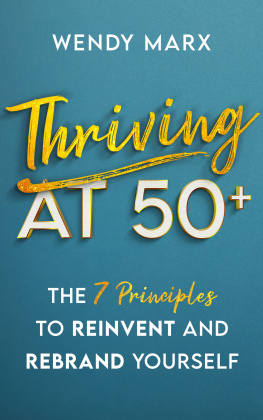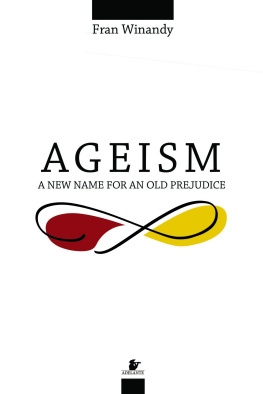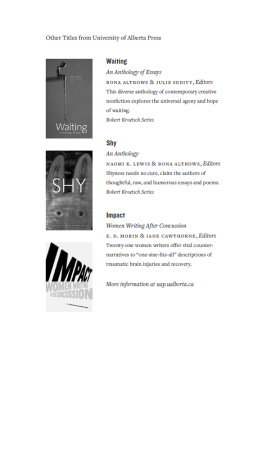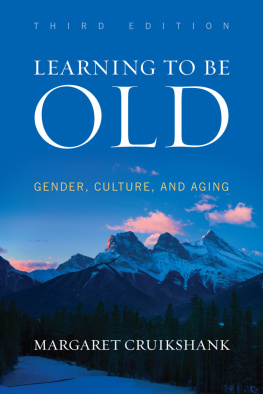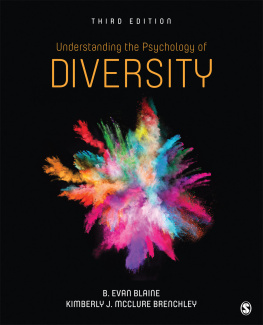
Ageism
Ageism: Past, Present, and Future presents perspectives for understanding ageism and puts ageism in the context of specific social institutions. McNamara and Williamson uniquely provide a number of complementary ways to understand ageism, including social and psychological theories of ageism, economic development, ageism as frame or lens, and ageism at the intersection of various social categories such as gender and race. They then put ageism in the context of mass media, health care, employment, and public policy. This short text is an ideal addition to courses on sociology of aging, social policy, and social problems.
Tay K. McNamara is Interim Co-Director of the Sloan Center on Aging and Work at Boston College. She is the principal investigator of the 200910 Talent Management Study, a survey of age-related attitudes and practices among United States employers. She is also the author or co-author of academic articles on a range of topics related to aging and work, such as employer-provided flexible work practices, training of older workers, and volunteerism among older adults. These articles have been cross-disciplinary, aimed at various audiences in academic disciplines sharing an interest in aging and work, such as gerontology, industrial relations, and human resource management.
John B. Williamson is Professor in the Department of Sociology at Boston College. He did his undergraduate work at MIT and his PhD work at Harvard University. He has co-authored or co-edited 17 books, most of which deal with aging issues including two that are gerontology textbooks. He has also authored or co-authored 165 journal articles and book chapters, many of which deal with aging-related issues such as older workers, retirement, Social Security, population aging, intergenerational equity, and old age security policy in various countries around the world. He has served as the chair of the Social Research, Policy, and Practice Section (which made him also a vice president) of the Gerontological Society of America. He served for many years as associate editor of The Gerontologist and is currently on the editorial board of five other journals.
First published 2019
by Routledge
52 Vanderbilt Avenue, New York, NY 10017
and by Routledge
2 Park Square, Milton Park, Abingdon, Oxon OX14 4RN
Routledge is an imprint of the Taylor & Francis Group, an informa business
2019 Taylor & Francis
The right of Tay K. McNamara and John B. Williamson to be identified as authors of this work has been asserted by them in accordance with sections 77 and 78 of the Copyright, Designs and Patents Act 1988.
All rights reserved. No part of this book may be reprinted or reproduced or utilised in any form or by any electronic, mechanical, or other means, now known or hereafter invented, including photocopying and recording, or in any information storage or retrieval system, without permission in writing from the publishers.
Trademark notice: Product or corporate names may be trademarks or registered trademarks, and are used only for identification and explanation without intent to infringe.
Library of Congress Cataloging-in-Publication Data
A catalog record for this title has been requested
ISBN: 978-1-138-20295-5 (hbk)
ISBN: 978-1-138-20296-2 (pbk)
ISBN: 978-1-315-47261-4 (ebk)
What comes to mind when you think about ageism and age discrimination? Do you think of an older worker fired for being behind the times or of an older person mocked for being slow? When most people think of ageism, they tend to think of big, obvious examples like these. It is no coincidence that perhaps the most iconic image of ageism today is that of the Inuits abandoning the elderly on an ice floe (Gullette, 2010; Savishinsky, 2000). When a practice is decried as ageist, people sometimes refer to it as putting older adults on the ice, a dramatic gesture that leaves no room for ambiguity. As Gullette (2010) and others have so eloquently detailed, many examples of ageism are relatively overt and dramatic, in which everyone knows it is occurring, but willfully overlooks it. From this perspective, ageism is the elephant in the room.
If ageism and age discrimination are really so rampant in our social institutions and culture, though, why are people not more outraged? In this introduction, we argue that the elephant metaphor captures only part of the reality of ageism. It is true that there is obvious ageism and age discrimination, examples of people being put on the ice. However, a more subtle reason that ageism remains pervasive within our culture and social institutions is that it is more difficult to identify and more ambiguous than other forms of prejudice and discrimination. Ageism can be quiet and elusive, more like a mouse in the room than an elephant.
A Thought Experiment: Finding the Mouse
Given its elusiveness, how can we find ageism? Imagine you visit a website that asks you questions about your attitudes toward older and younger people. On a scale from 1 to 10, the website asks you, How positively do you feel toward older people? How positively do you feel toward younger people? You say you feel somewhat positively toward both age groups, around a 7 on each scale. After all, you think, you arent ageist! The website then asks you to complete a set of tasks. It tells you to categorize, as quickly as your reflexes will allow, faces as old or young and words as good or bad. The website then asks you to categorize the same words and faces into old or good and young or bad categories, and then into the categories old or bad and young or good. After a little practice, you are able to categorize words and individuals according to this method. When you see the word laughter you choose old or good or young or good, depending on what the options are. When you see the word terrible, you choose old or bad or young or bad, depending on what the options are. Maybe you have to think a little harder and longer when the choice is old or good than when it is young or good. Does the difference in the time it takes for you to click each category mean anything?
Researchers using this test, called the implicit association test, argue that the difference in the time it takes you to choose between various categories reveals implicit ageism (see ProjectImplicit for implicit association tests). Introduced in 1998 (Greenwald, McGhee, & Schwartz, 1998), the test measures the automatic association between two concepts in your memory. If a person unconsciously associates old with bad, they will be able to categorize old faces into the old or bad group more quickly than they can categorize old faces into the old or good group. According to this method, the bigger the difference between the two times, the more implicitly biased you are. The underlying logic of the implicit association test is that ageism can be so subtle that you cannot detect it in yourself.
Is Ageism Different?
From this perspective, any form of prejudice can be a mouse. Implicit association tests have found implicit biases for most categories, such as race and gender. People can be racist or sexist without knowing it. Are ageism and age discrimination really that different? Below we discuss three types of discrimination that can occur with any type of advantaged/disadvantaged group, each of which can be difficult to identify: reverse discrimination, unintentional discrimination, and institutional discrimination. For each of these, we argue that some factors that make prejudice and discrimination hard to identify are consistent regardless of the target group (e.g., women, older adults), but in each case ageism has specific characteristics that further muddy the waters. In all three cases, we focus on


